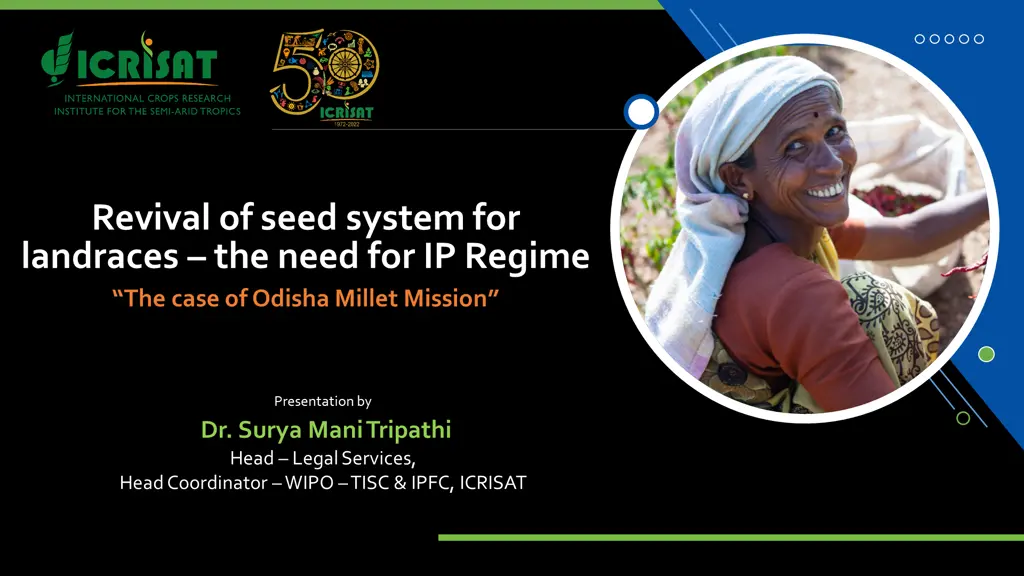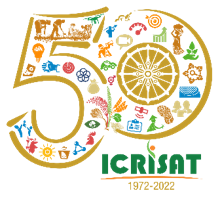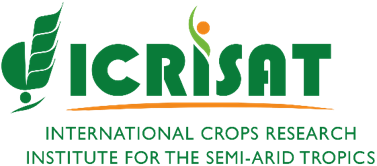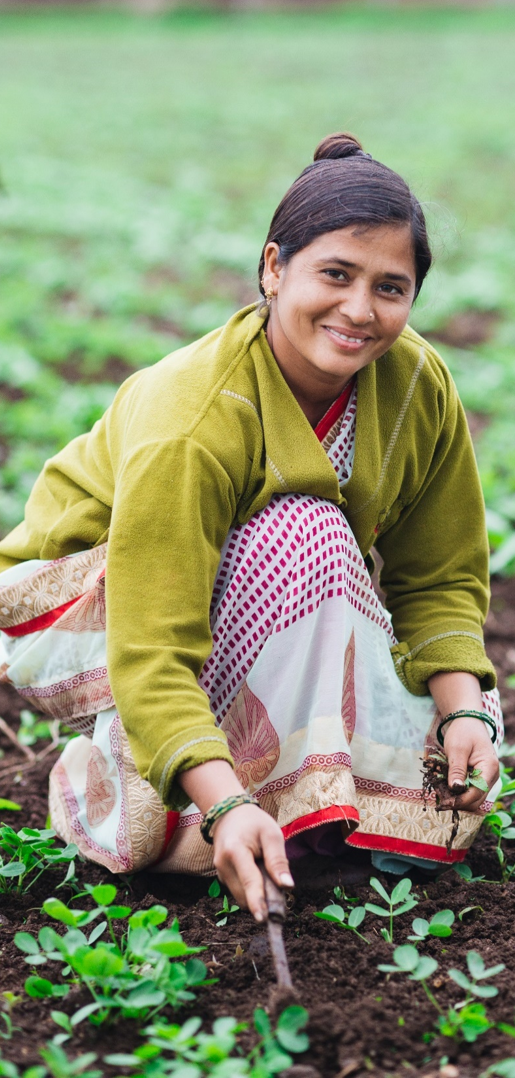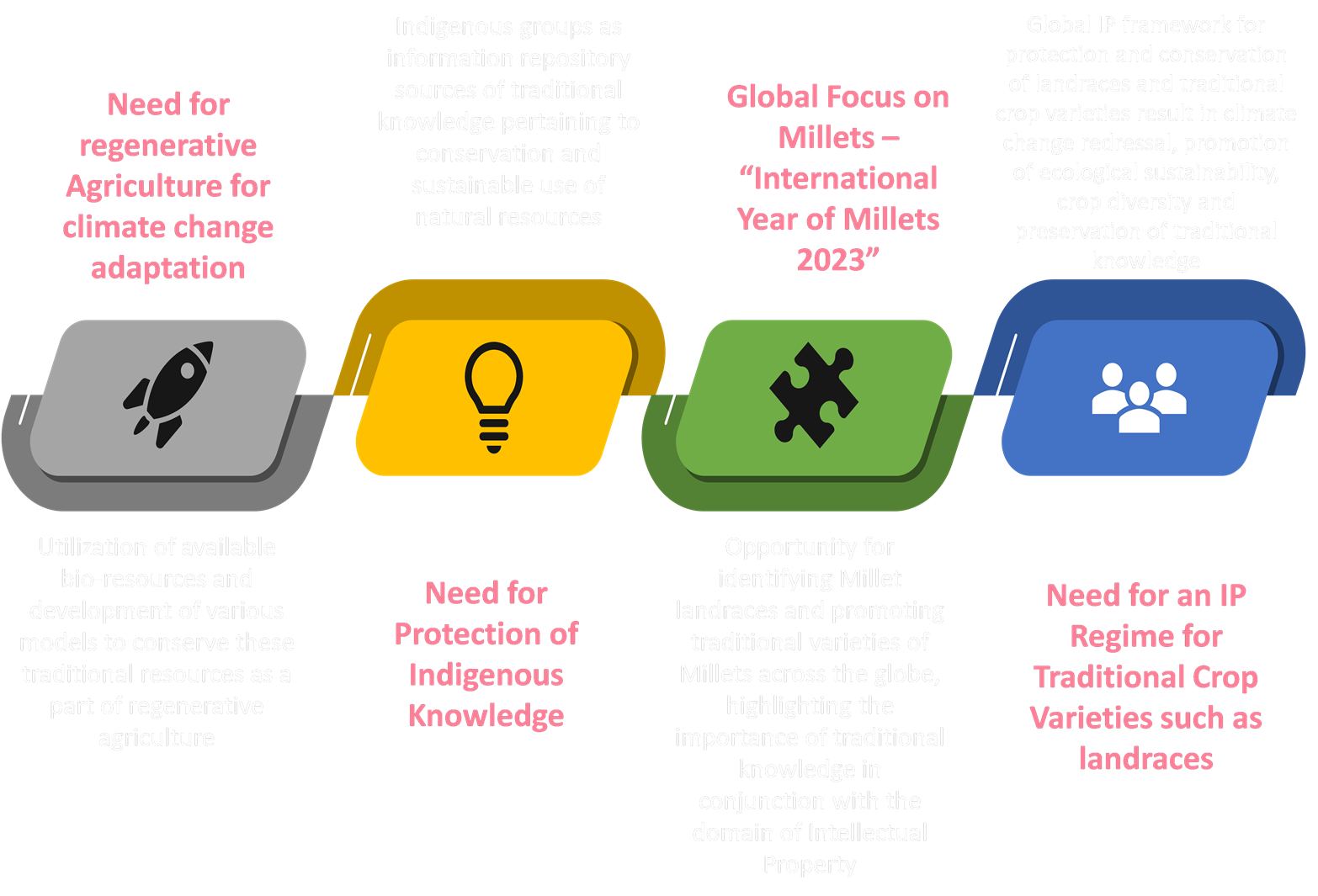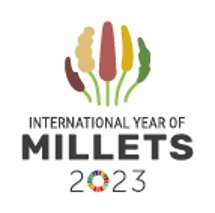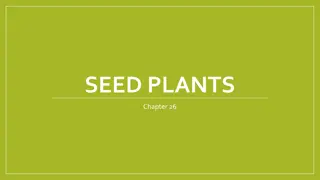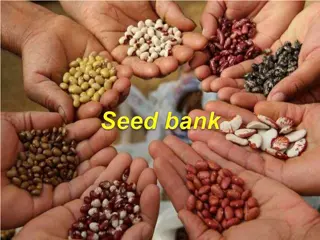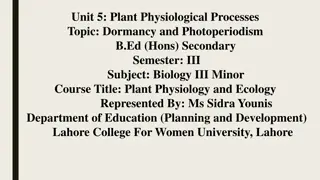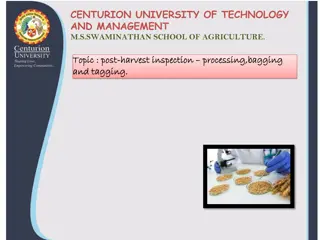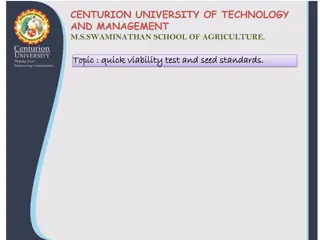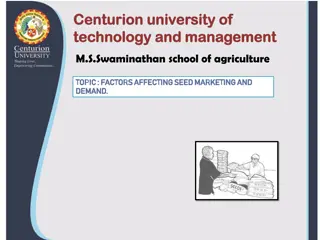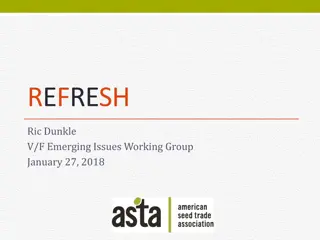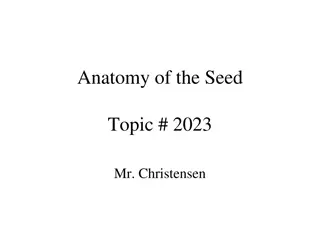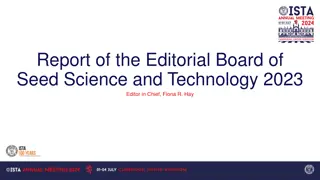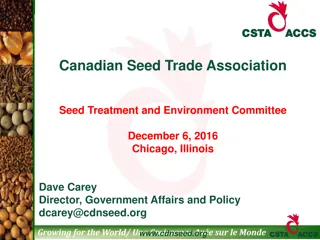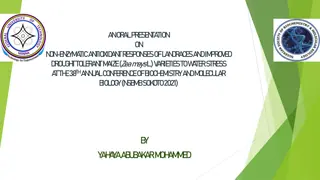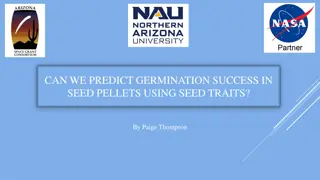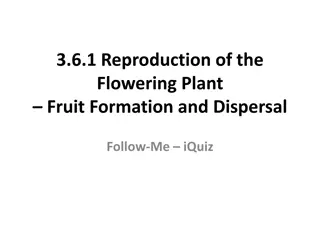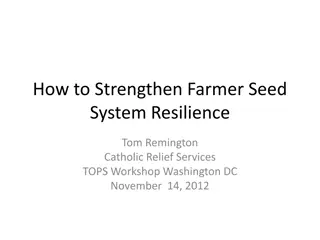Revival of seed system for landraces
The presentation discusses the significance of an International Year of Millets in 2023, focusing on the revival of traditional crop varieties like landraces for climate change adaptation through regenerative agriculture. It emphasizes the protection of indigenous knowledge and the need for an Intellectual Property regime for landraces. The case study of Odisha Millet Mission highlights the efforts to conserve and promote native millet varieties, involving various stakeholders for sustainable agriculture.
Download Presentation

Please find below an Image/Link to download the presentation.
The content on the website is provided AS IS for your information and personal use only. It may not be sold, licensed, or shared on other websites without obtaining consent from the author.If you encounter any issues during the download, it is possible that the publisher has removed the file from their server.
You are allowed to download the files provided on this website for personal or commercial use, subject to the condition that they are used lawfully. All files are the property of their respective owners.
The content on the website is provided AS IS for your information and personal use only. It may not be sold, licensed, or shared on other websites without obtaining consent from the author.
E N D
Presentation Transcript
Revival of seed system for landraces the need for IP Regime The case of Odisha Millet Mission Presentation by Dr. Surya Mani Tripathi Head Legal Services, Head Coordinator WIPO TISC & IPFC, ICRISAT Name here Name here WIPO FOR OFFICIAL USE ONLY
CONTEXT Global IP framework for protection and conservation of landraces and traditional crop varieties result in climate change redressal, promotion of ecological sustainability, crop diversity and preservation of traditional knowledge Indigenous groups as information repository sources of traditional knowledge pertaining to conservation and sustainable use of natural resources Global Focus on Millets International Year of Millets 2023 Need for regenerative Agriculture for climate change adaptation Opportunity for identifying Millet landraces and promoting traditional varieties of Millets across the globe, highlighting the importance of traditional knowledge in conjunction with the domain of Intellectual Property Utilization of available bio-resources and development of various models to conserve these traditional resources as a part of regenerative agriculture Need for Protection of Indigenous Knowledge Need for an IP Regime for Traditional Crop Varieties such as landraces WIPO FOR OFFICIAL USE ONLY
Traditional knowledge refers to the awareness, resources, information and traditions of local and indigenous cultures which are acquired from experience gained over the centuries and adapted to the local culture and environment, and the knowledge of which is transmitted from generation to generation. Indigenous and local communities highlight traditional knowledge they have gained over generations and reflects their long cultural existence. Landraces are ecotypes cultivated for a long time in their pristine habitats. Farmers have selected them for traits based on their ecological suitability, traditional cooking and consumption habits. For local adaptation and resilience in the changing climate era, it is important to promote cultivation of landraces by the farmers. Odisha s Millet -Indigenous groups, with the most yielding traditional crop varieties WIPO FOR OFFICIAL USE ONLY
Objective of the Mission Odisha Millets Mission A Case Study Revival of Millet Seed Systems for Landraces to protect, promote and preserve traditional millet crop varieties as an effort to preserve indigenous knowledge of farming communities involved in millet farming Stakeholders in the Mission Department of Agriculture and Farmers Empowerment (DoA&FE), officials from Govt. of India, Farmers, Women groups, Community leaders, NGOs, Panchayati raj institution members and technical experts from other states besides Odisha What the case study highlights? How the seed systems multiplied via landraces yielded more nutritional value and harvest quantity as compared to the commercially bred crop varieties. Mission Way Forward Four traditional varieties/Landraces which are performing better and on par to national checks are ready to go through the process laid out in approved SoPs to get released and notified. How agrobiodiversity can be conserved by local communities by facilitating cultivation and consumption of a wide variety of landraces; thus preserving traditional knowledge. The government has finalized to extend similar kind of landrace revivals to pulses, oil seeds and other millets through appropriate SOPs in consultation with the respective stakeholders and communities The need to protect landraces by developing an IP regime for traditional Crop varieties. WIPO FOR OFFICIAL USE ONLY
The Mission - Proceedings Odisha Millet Mission has explored the landraces of millets which are still grown in few pockets in the state of Odisha. These varieties have been conserved both in field gene bank attached to Community Management Seed System (CMSS) and also in the State Seed Testing Laboratories (SSTL) in Bhubaneswar. Till now, 97 traditional millet varieties have been stored in SSTL. The farmers have been given access to the conserved landraces from SSTL if there is a loss of landrace due to any natural calamities. Traditional millet varieties have been collected from primary conservers from different districts in the state with a prescribed format. The conservation activities have been conducted in the agro-ecological zones involving farmers in various stages twice in a crop cycle, late vegetative stage and physiological maturity stage for collecting seed materials from the conservation plot as per the laid out SOPs. Some farmers were designated by the mission as 'Seed Farmers', and they played leading roles in conservation and exchange among farmers in their respective regions. Training programs were organized for Farmers Producers Organisations (FPO) and Women Self-help Groups (WSHGs) on seed production protocols and the effective process of preserving quality seeds. WIPO FOR OFFICIAL USE ONLY
Multi-Location Trials, DUS Testing and Conservation of Millet Landraces, Odisha, India WIPO FOR OFFICIAL USE ONLY
THE IMPACT Preservation of Indigenous Knowledge Better Crop Yields over commercial varieties Contribution to Higher ecological Sustenance IP regime for Landraces Triggered the discussion to have Alternate IP protection system for landraces/ traditional varieties just like protection of new plant varieties The traditional know-hows have helped in effective ecological restoration and preservation where landraces have been cultivated Highlighted the importance of traditional knowledge preservation resulting in better crop yield, improved ecological sustenance and livelihoods Demonstrated improved crop yield for the traditional landraces over commercial and hybrid varieties, resulting in improved financial earnings WIPO FOR OFFICIAL USE ONLY
ODISHA MILLET MISSION THE TEAM Dr. Arabinda Kumar Padhee, IAS Principal Secretary, Department of Agriculture & Farmers Empowerment, Govt. of Odisha Mr. Prem chandra Chaudhary, IAS Director, Department of Agriculture & Food Production, Govt. of Odisha Dr. K. S. Varaprasad, Former Director ICAR-IIOR, and Chairman of Working Group on Seeds of RRA network & OMM Dr. Sudhi Ranjan Dhua Retd Scientist, ICAR - NRRI Mr. Chakradhar Panda District Agriculture Officer, Angul Mr. Anshuman Pattnaik Assistant Agriculture Officer Mr. Sailendra Mohanty Joint Director of Agriculture (millets) Mrs. Bhgyalaxmi Associate Director, WASSAN, Hyderabad Mr. Dinesh Balam State Coordinator, Odisha Millets Mission, WASSAN, Odisha Dr. C. Lavanya Principal Scientist, ICAR IIOR, Hyderabad Mr. Susanta Sekhar Chaudhury Senior Scientific Officer, Odisha Millets Mission, WASSAN Mr. Biswa Ranjan Das Senior Programme Officer, Odisha Millets Mission, WASSAN Mr. Pulak Ranjan Nayak Programme Officer, Odisha Millets Mission, WASSAN Mr. Uday Nagamundi Programme Officer, WASSAN, Hyderabad WIPO FOR OFFICIAL USE ONLY
Dr. Surya Mani Tripathi Head Legal Services, Head Coordinator WIPO TISC & IPFC, ICRISAT Suryamani.Tripathi@icrisat.org +91 8008123544, +91-8455683466 Thank YOU WIPO FOR OFFICIAL USE ONLY
